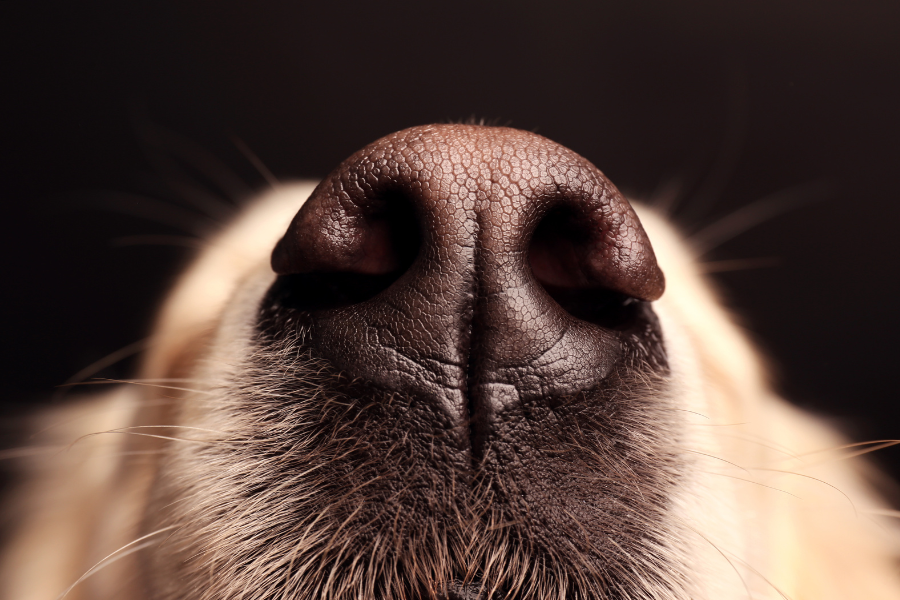Hey there, pet parents! Ever wondered if your furry friend can sense dangers like carbon monoxide? If so, you’re in the right place. Today, we’re digging deep into the nose of our best buddies to see if they can detect this invisible threat.
The Pawsome Power of a Dog's Nose
First things first—dogs have incredible noses. We're talking superhero-level sniffers here. A dog’s sense of smell is anywhere from 10,000 to 100,000 times more sensitive than ours. While we may smell a spaghetti sauce cooking, Fido can sniff out every single herb and spice in that pot.
How Do Dogs Use Their Sense of Smell?
Dogs use their noses for more than just locating treats. They rely on their sense of smell to:
- Identify and track scents
- Communicate with other dogs
- Sense emotions and health conditions in humans
Canine noses are so powerful that they can detect diseases like cancer, find missing persons, and even sniff out drugs and explosives. But what about carbon monoxide (CO)?
Carbon Monoxide 101
Before we get into whether dogs can smell carbon monoxide, let's chat about what it actually is. Carbon monoxide is a colorless, odorless gas produced by burning fuel. This sneaky gas can come from:
- Car exhausts
- Gas stoves
- Fireplaces
- Furnaces
Because it's odorless and invisible, CO is notoriously hard for humans to detect without special equipment. When inhaled, it can prevent oxygen from reaching your cells and organs, leading to some serious health issues—yikes!
Can Dogs Smell Carbon Monoxide?
Now, for the million-dollar question—can dogs smell carbon monoxide? The answer is both yes and no.
The Science Behind It
Carbon monoxide itself is odorless, which means there isn't a scent for dogs—or anyone else—to detect directly. However, dogs may be able to smell associated scents or changes in the environment caused by CO-producing appliances. For example, they might notice the smell of incomplete combustion or the change in scent when a furnace isn't working correctly.
Dogs as Early Detectors
While dogs can't smell CO itself, they might still be able to alert us to danger by picking up on:
- Behavioral changes in other pets or humans
- Unusual scents or environmental changes in the home
Some dogs are trained to detect specific smells associated with various conditions and might alert their owners if they notice something off.
Signs Your Dog Might Detect Carbon Monoxide
Even though dogs can't smell carbon monoxide directly, they might still show signs of distress if there's a CO leak in your home. Here are some symptoms to watch out for:
- Lethargy or fatigue
- Breathing difficulties
- Disorientation or confusion
- Vomiting or loss of appetite
- Change in behavior, such as whining or pacing
If you notice any of these signs, it's crucial to take action immediately. Get everyone—pets included—out of the house and call emergency services.
Keeping Your Home Safe from Carbon Monoxide
While your pup is a great companion, they shouldn’t be your primary CO detector. Here are some tips to keep your home safe:
- Install carbon monoxide detectors on every level of your home and near sleeping areas.
- Test your CO detectors regularly to ensure they’re working properly.
- Service your heating systems, water heaters, and any gas-burning appliances annually.
- Never use generators, grills, or camp stoves inside your home or garage.
The Role of Professional Training
For those who want an extra layer of safety, there are programs where dogs are trained to detect certain environmental changes associated with dangerous gases. While not specifically trained for carbon monoxide, these dogs can provide additional peace of mind by alerting owners to issues with gas appliances or leaks.
Conclusion
While dogs can't directly smell carbon monoxide, their incredible noses can still help alert us to potential dangers in roundabout ways. Don't rely solely on your pooch to keep your home safe from CO—make sure to equip your home with proper detectors and take preventative measures to protect your loved ones, both two-legged and four-legged.
Feeling more informed? Great! Now, go give your furry friend a well-deserved belly rub, and make sure your home is as safe as it can be.
Want to keep learning about how to keep your home and pets safe? Subscribe to our newsletter for tips, tricks, and exclusive content tailored just for awesome pet owners like you!
Stay safe and keep wagging!
FAQ
How Long Does It Take for Carbon Monoxide to Affect Dogs?
Dogs, just like humans, can be affected by carbon monoxide relatively quickly. The time it takes for symptoms to appear can vary based on several factors, including the concentration of carbon monoxide in the air and the size of the dog. Generally, in a high-concentration situation, signs of carbon monoxide poisoning can begin to manifest within minutes. In lower concentrations, it may take longer, but the danger still looms. The first indicators might include dizziness, lethargy, or difficulty breathing. If these symptoms are ignored, more severe effects can follow, such as loss of consciousness or even fatalities. Therefore, it’s crucial to act swiftly at the first sign of trouble to ensure the safety of your furry friends.
Can Dogs Smell Gas Leaks?
Alright, pet enthusiasts, let's dive into another important topic: those sneaky gas leaks. If you’ve ever wondered whether your loyal canine can sniff out a gas leak before you can, you’re in for some fascinating info!
The Nose Knows
Dogs are equipped with olfactory receptors that are off-the-charts amazing. Remember how we said their sense of smell is up to 100,000 times more sensitive than ours? Well, this comes in super handy when it comes to detecting gas leaks. Natural gas itself is actually odorless, but utility companies add a distinct smell—usually something sulfur-like, kind of like rotten eggs—to help humans and our four-legged friends detect it easily.
How Dogs React to Gas Leaks
Because of their acute sense of smell, dogs might pick up on gas leaks way before any human nose does. You might notice your dog:
- Sniffing around persistently in a particular area
- Acting restless or anxious
- Whining, barking or showing signs of distress
- Avoiding or trying to escape from areas where the gas leak is stronger
The Power of Instinct
Dogs have remarkable instincts and often go into protective mode when they sense danger. If your dog starts behaving oddly or like they’re trying to tell you something, take a moment to investigate! Their keen sense of smell and intuition can be lifesavers.
What To Do If You Suspect a Gas Leak
If your dog’s behavior suggests there might be a gas leak, don’t take any risks:
- Evacuate everyone—including pets—from the house immediately.
- Avoid using electrical switches, phones, or anything that could create a spark.
- Once you’re safely outside, call your gas company and emergency services.



